This website uses cookies so that we can provide you with the best user experience possible. Cookie information is stored in your browser and performs functions such as recognising you when you return to our website and helping our team to understand which sections of the website you find most interesting and useful.
Bond behind the wheel: a look at 007’s relationship with Aston Martin
By Rory FH Smith | 15 October 2021 | Cars & Yachts, Culture, Lifestyle
With four generations of Aston Martins at Bond’s disposal in No Time to Die, Tempus celebrates cinema’s most iconic automotive partnership with this exclusive photoshoot
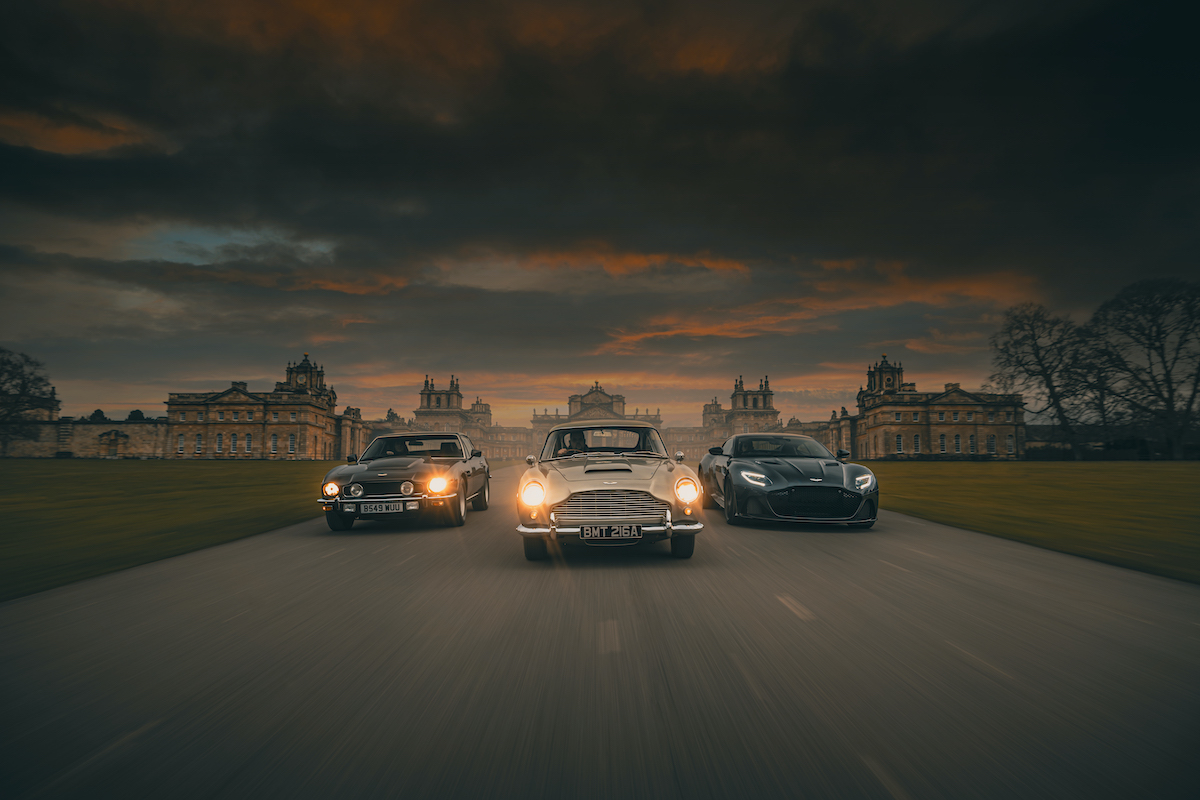
Let’s face it; James Bond wasn’t originally an Aston Martin kind of guy. While Hollywood would have us believe otherwise, 007’s car of choice was, originally, something a little less sleek than the iconic Aston Martin DB5 we all have in mind. Of course, the true 007 fans out there will know that his creator, Ian Fleming, actually placed the infamous international man of mystery behind the wheel of a 1930s Bentley.
“Bond’s car was his only personal hobby,” writes Fleming in his first Bond novel, Casino Royale (1953). “One of the last of the 4 1/2-litre Bentleys with the supercharger by Amherst Villiers, he had bought it almost new in 1933 and had kept it in careful storage through the war. […] Bond drove it hard and well and with an almost sensual pleasure. It was a battleship-grey convertible coupe, which really did convert, and it was capable of touring at 90 with 30 miles an hour in reserve.”
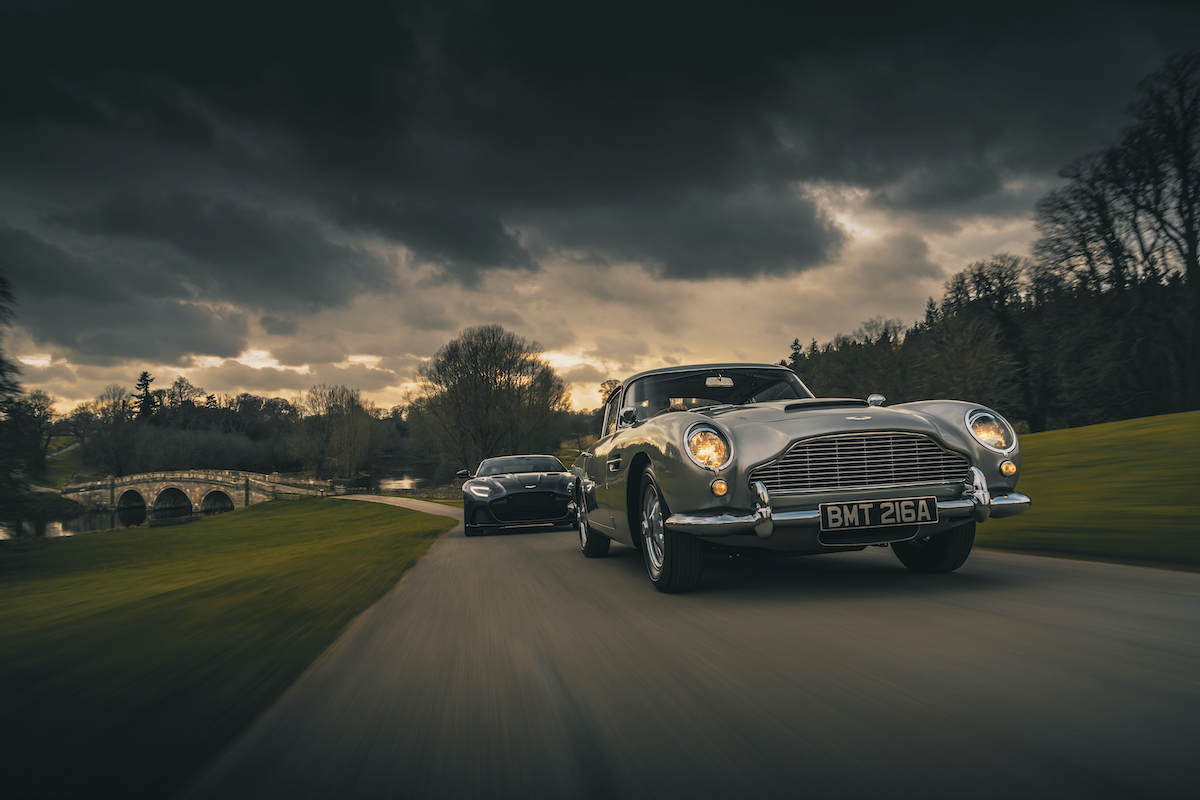
Fleming’s detailed description of 007’s original ride reveals his own soft spot for sportscars – albeit the older variety – with Bond’s vehicle harking back to the days of the debonaire Bentley Boys. First developed by Sir Henry “Tim” Birkin in 1929, the supercharged Bentley – affectionately known as a Blower – caused quite a stir everywhere from the racing circuit to the streets of Mayfair. Fleming was 21 when the first Blower made its mark on the racing scene; it’s clear the author took a shine to the burly British racers of the time when he chose to immortalise them in his novels over two decades later.
But Bond’s time behind the wheel of his Bentley would be brief. By the time Fleming was on to his seventh book, Goldfinger (1959), Bond had found himself behind the wheel of an Aston Martin. Fleming wrote: “The car was from the pool. Bond had been offered the Aston Martin or a Jaguar 3.4. He had taken the DB III. Either of the cars would have suited his cover – a well-to-do, rather adventurous young man with a taste for the good, fast things in life. But the DB III had the advantage of an up-to-date triptyque, an inconspicuous colour – battleship grey – and certain extras which might or might not come in handy.”
From that moment, the seed was sown for one of the greatest automotive associations of all time. Aston Martin was on its way to spy-thriller stardom.

THE GOLDEN AGE
By the 1960s, Fleming’s novels had begun their inevitable journey onto the silver screen, with Dr. No, starring Sean Connery, making its premiere in 1962. True to the book, Bond’s ride was a dainty Sunbeam Alpine. From Russia With Love followed in1963,whichsawConnery’sBondpilota1935 Bentley 3.5 Litre drophead coupe Park Ward.
But it was film number three – Goldfinger (1964) – in which 007 was finally united with the iconic Silver Birch Aston Martin DB5, the marque’s state-of-the-art new model replacing Fleming’s DB III.
“There’s a wonderful story behind how it all started,” says Aston Martin’s chief creative officer Marek Reichman. “It was down to a man called Ken Adams, who was the original Bond set designer. He created the whole visual language of Bond, beginning with Dr. No.”
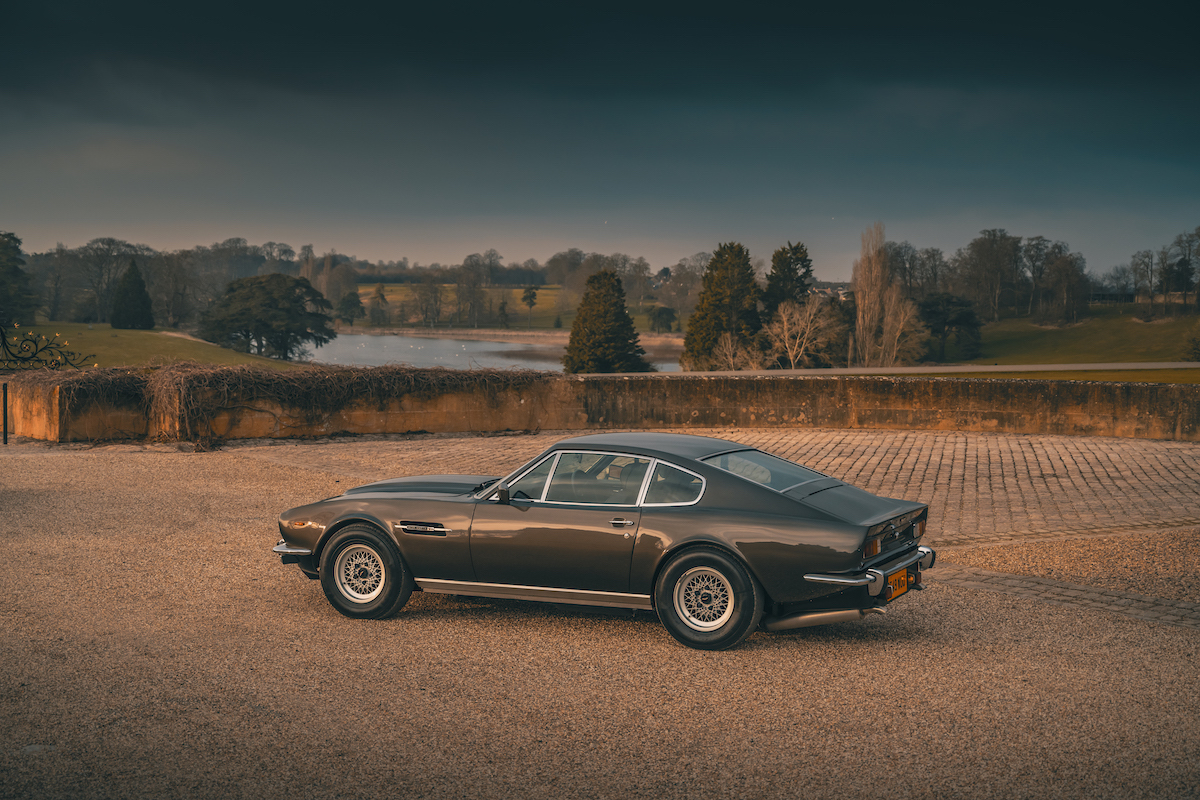
While Adams was praised for his work on making the first film such a success, the producers actually awarded him a smaller budget for Goldfinger after they’d overspent significantly on Dr. No. Knowing he still needed to put on a convincing car chase in the next film, albeit on less money, Adams considered using his own red Jaguar E-type in the film.
“But, deep down, he knew it had to be an Aston Martin or a Bentley,” says Reichman. “And every day on his way into Pinewood Studios he’d pass a silver Aston Martin parked up.”
After leaving a note for the owner on the windscreen,to which he got no response, Adams plucked up the courage to call Aston Martin itself and ask for a car. Though initially relunctant, after seeing the plans for the special effects, the marque was fully on board. “Aston delivered a red DB5 with grey interior to the set, which was then painted in the iconic Silver Birch after modifications. Hey presto, the magic of Aston Martin and Bond arrived,” says Reichman. “Because Adams was persistent and had a vision, we now have one of the longest-running franchise relationships with any product.”
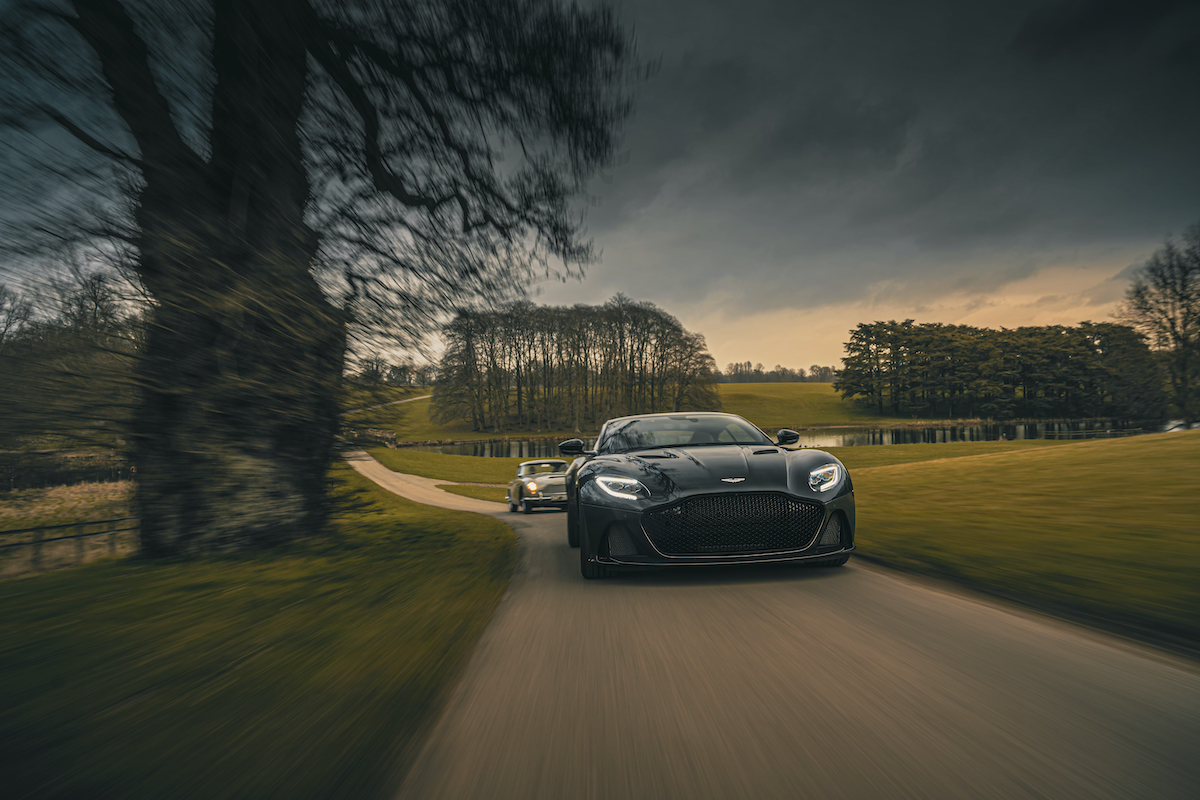
Equipped with a healthy selection of gadgets – including front-mounted machine guns, interchangeable rotating number plates, a shield, oil slick, smoke screen and, best of all, an ejector seat – the DB5 made its debut in Q’s laboratory, before Sean Connery used it to cruise through the Swiss Alps in pursuit of gold bullion-hoarding baddy Auric Goldfinger.
In short, Bond and the Aston hit it off perfectly, with the film helping to increase sales of the grand tourer as well as lifting the profile of the small British carmaker. This success signalled the start of a relationship which would span 13 Bond films and more than half a century of cinematic history.
“It’s very difficult to explain why this relationship has lasted so long and that’s part of the mystery,” says Reichman. “There’s just a great resonance with the language, the culture, the overt power but subtle messaging… it’s all about something that evokes style, yet has this instinct that is quite ruthless.”
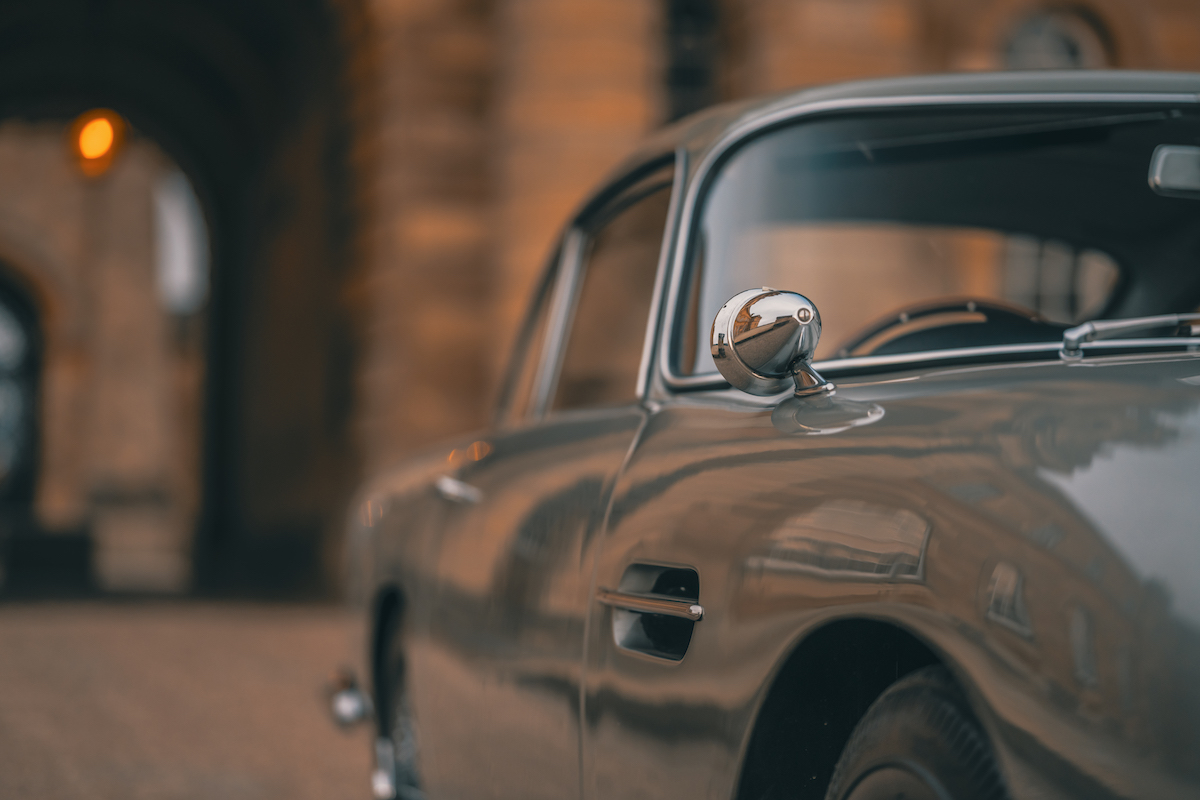
Since Goldfinger, the DB5 made its first reappearance in Thunderball (1965), and has appeared in a total of nine films, including Bond’s latest adventure, No Time to Die – finally released in cinemas on 30 September after an 18-month delay due to the Covid-19 pandemic. In addition to the DB5, a total of eight other Astons have crossed Bond’s driveway in 007’s 57 years of on- screen service – a 1969 Aston DBS in On Her Majesty’s Secret Service (1969, starring George Lazenby), a V8 in The Living Daylights (1987, starring Timothy Dalton), and a V12 Vanquish in Die Another Day (2002, starring Pierce Brosnan). Daniel Craig’s impressive run has seen him drive a V12 DBS in Casino Royale (2006) and Quantum of Solace (2008), as well as the exclusive DB10, specially created for 2015’s Spectre.
TIME TO DRIVE
While this tally of Aston Martins in previous Bond films is significant, nothing compares to the bumper crop soon to star in No Time to Die. The 2021 film features a total of four cars from the marque – including the original DB5, the V8 featured in The Living Daylights, the latest DBS Superleggera and the mighty Valhalla, developed with expertise forged in Formula One.
Alongside his trusty Aston Martin fleet, Land Rover’s brand-new Defender is put through its paces in a chase scene that sees it jump, wade, bounce and even barrel roll its way across the countryside. In keeping with the past few films, the Defender remains the weapon of choice for Bond’s adversaries.
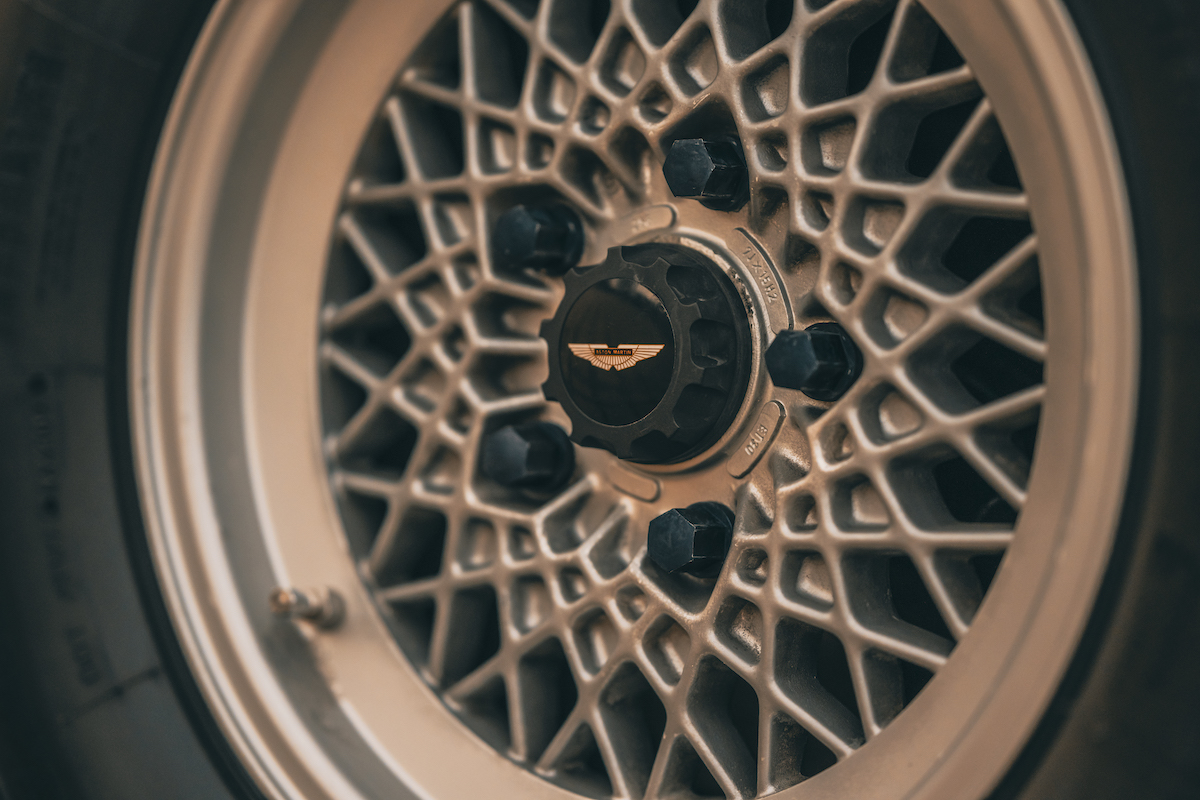
Celebrating the release of the film and more than 50 years of history, Aston Martin’s own Q-branch and Bond have teamed up to make a series of two special ‘007 Edition’ models of the current Vantage and DBS Superleggera.
For the Vantage, a pair of optional skis, yellow trim and Cumberland grey paintwork pay tribute to the V8 driven by Dalton in The Living Daylights, while the DBS is trimmed to match the exact spec of the one driven so fearlessly in No Time to Die. But there’s also something rather special for deep-pocketed Bond fanatics. Entering into production in 2020, a total of 25 DB5 continuation models will be produced for the princely sum of £2.7m, each built to the specification of James Bond’s Q Branch model, with representative gadgets inside and out. Resembling the iconic silver birch DB5 to the letter, the cars even come equipped with ‘simulated’ twin front-mounted machine guns.
While the world’s favourite spy has driven everything from a Rolls-Royce to a Citroën 2CV, Bond and Aston Martin are now inseparable. Despite Fleming pairing his best-loved character with a burly British Bentley in the first instance, it was the glossy movie producers who created the most powerful product affiliation in the history of Hollywood.
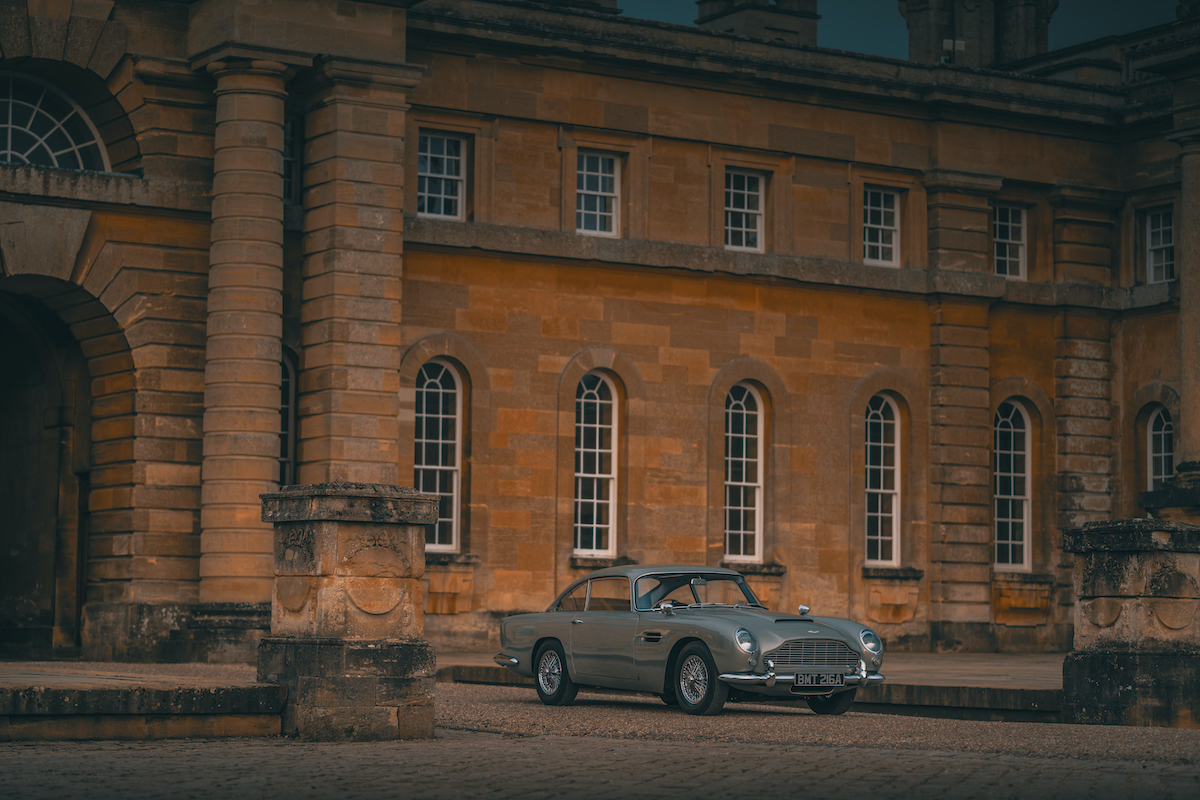
Of course, matching a motor car to the most stylish man in film was always going to be a challenge, but when Sean Connery first paired up with the DB5 in 1964 history was made. Since that moment, both Aston Martin and Bond have benefitted from each other’s success, with the carmaker starting to make more special-edition models bearing 007’s name.
“We always used to say that we don’t need Bond and Bond doesn’t need us, but two people can exist, and if they fall in love and get married, then they create a wonderful partnership,” says Reichman. “And, I think, even within that partnership, there may be tough times, but overall they’re better together than apart.”
With No Time to Die sporting the biggest and boldest line-up of cars from the Gaydon-based marque to date, the film’s automotive roster is a sign that the relationship between the two brands remains in rude health. While the new release will see Daniel Craig hang up his holster as Bond and relinquish his licence to kill, only time will tell who will step into his formidable shoes. All we can be sure of, it seems, is that the newly knighted 007 will be back behind the wheel of an Aston Martin in no time at all.







